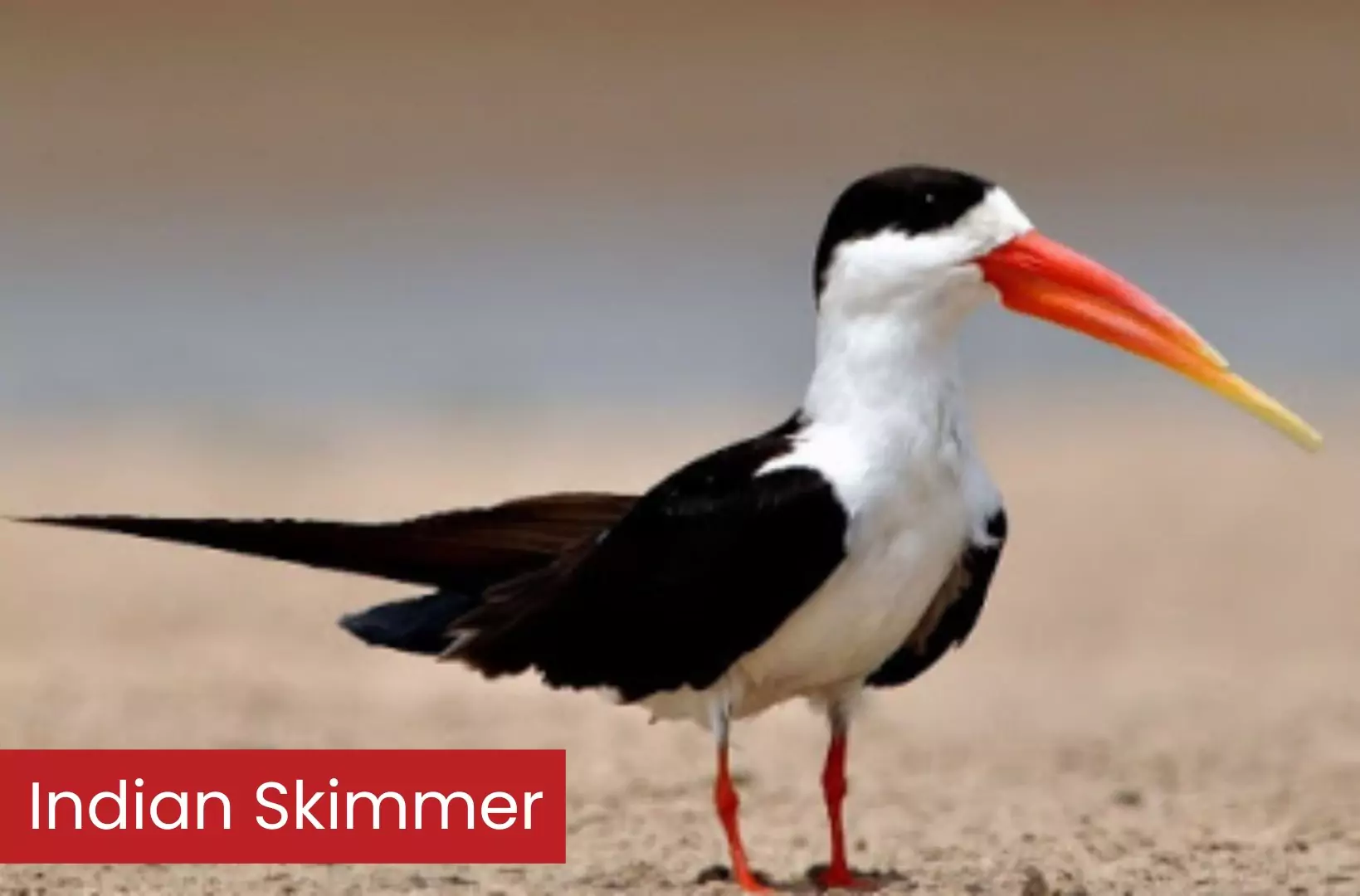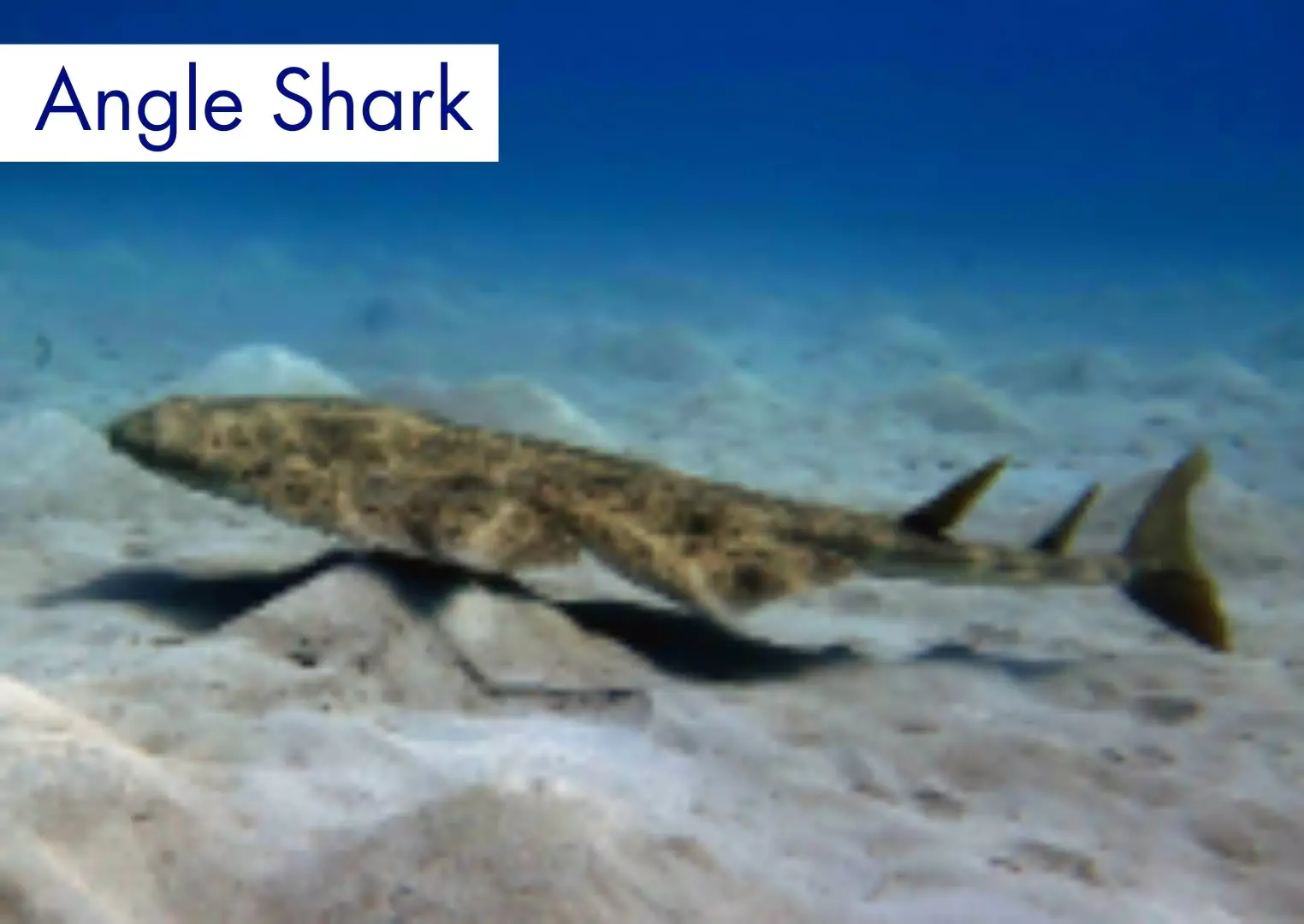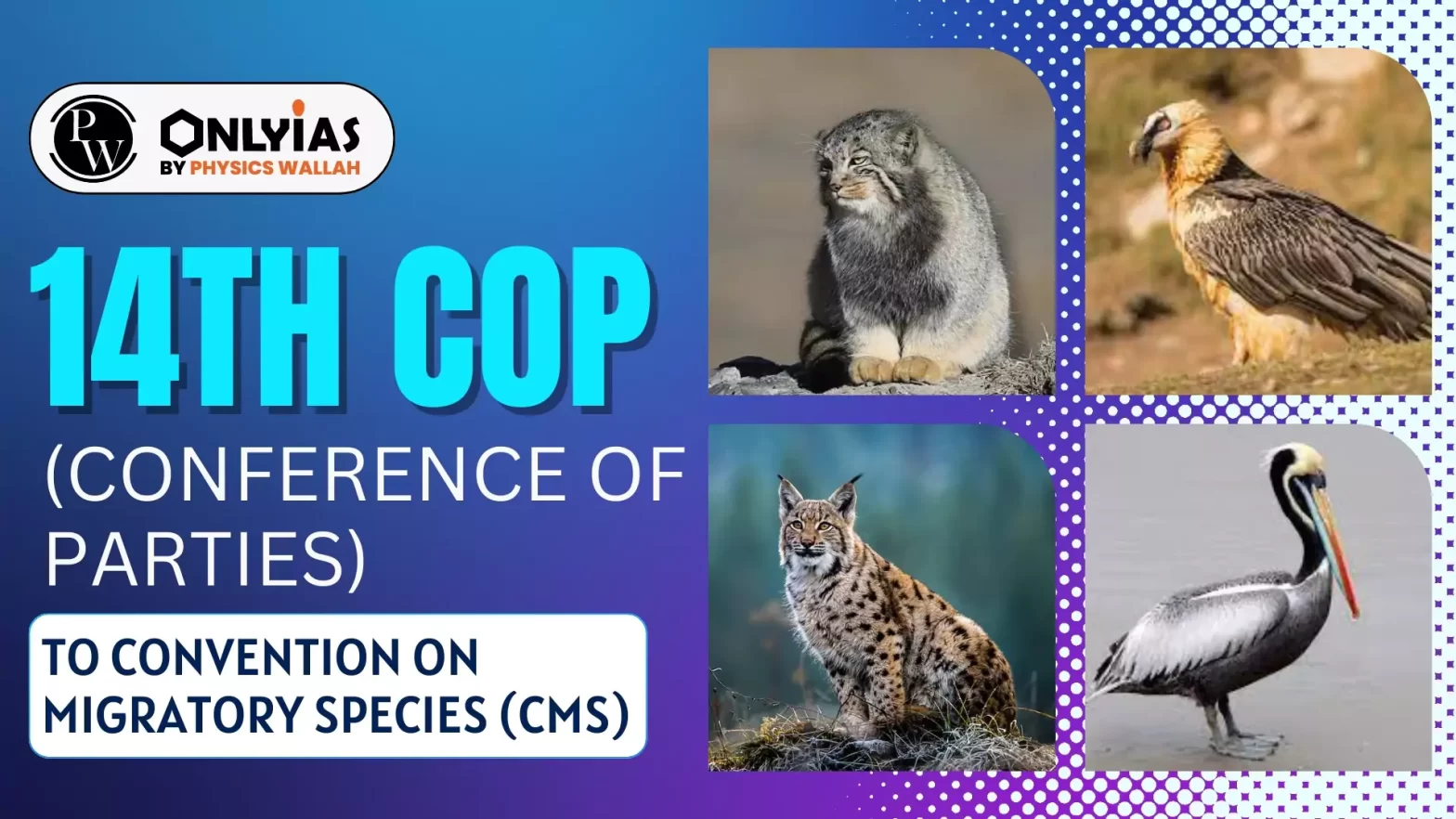Context:
This article is based on the news “CMS COP14 ends in Samarkand; proposals listing 14 migratory species adopted” which was published in the DownToEarth. The 14th Conference of Parties of CMS ended in Samarkand, Uzbekistan with the proposed recommendation of listing 14 migratory species.
CMS COP14: Convention On Migratory Species
- The proposals for amendment of CMS Appendices I and II were discussed and recommended by the Committee of the Whole (COW) or countries for adoption.
Committee of the Whole (COW):
- It is the main decision-making body of CMS
- Meets to review the work of the secretariat.
- The COW is important in promoting cooperation and collaboration among parties to the Convention.
|
- It aims to maintain existing populations and improve connectivity among migratory species for effective migrations by removal of barriers.
- Slogan: “Nature Known No Border”
Also Read: UN Climate Summit 2023 or COP28
Key Outcomes of 14th CMS (Convention On Migratory Species)
Proposals for 14 Enlisting Migratory Species: Eurasian Iynx, Peruvian pelican, Pallas’s cat, Guanaco, Lahille’s bottlenose dolphin, Harbour porpoise, Magellanic plover, Bearded vulture, Blackchin guitarfish, Bull ray, Lusitanian cow nose ray, and Gilded catfish.
- Important Recommendations are:
- Indian Skimmer: The 14th CoP of CMS adopted an action plan for improving the conservation status of migratory landbird species in the African-Eurasian region.
Single Species Action Plan:
- The purpose of the Single Species Action Plan is to mitigate potential impacts on the conservation of significant fauna species and ensure the project is developed in an environmentally acceptable manner.
|
-
-
- India and Bangladesh submit a joint proposal to list Indian Skimmer under the Convention On Migratory Species (CMS). It also noted issues about its riverine and coastal habitats and its possibility of extinction in Southeast Asia following its severe decline identified in early 2020.
- Hawksbill Turtle: The 14th CoP of CMS adopted the Single Species Action Plan to conserve the Hawksbill Turtle in Southeast Asia and the Western Pacific Ocean region.
- It shared concerns that the Hawksbill Turtle was identified as Critically Endangered under the IUCN Red List of Threatened Species in 2008.
- Angel Shark: In another discussion, CoP 14 also adopted a Single Species Action Plan for the Agnleshark in the Mediterranean Sea.
- It is also Critically Endangered under the IUCN Red List of Threatened Species.
- Eurasian Iynx and Balkan Iynx: The proposal to include the Eurasian Iynx and Balkan Iynx in Appendix 2 of the Convention was made by North Macedonia.
- Aim: The protection efforts aim to maintain existing populations and improve connectivity for effective migrations.
- Countries Adopting: Albania and Turkmenistan supported the proposal and recommended it for adoption.
- Guanaco: COW also recommended a proposal to include Guanaco in Appendix 2 of the Convention for adoption.
- Aim: To safeguard its habitat, restore populations, and maintain connections between populations.
- Harbour porpoise (Phocoena phocoena): The proposal to include Harbour porpoise made in Appendix 1, was made by the European Union.
- Peruvian Pelican (Pelecanus thagus): A proposal to include in Appendix 1 and 2 was recommended.
About Convention On Migratory Species (CMS)
- Convention On Migratory Species (CMS) also known as the Bonn Convention, is an international environmental treaty under the agies of the United Nations Environment Programme (UNEP).
- Commenced on: It came into force on November 1, 1983.
- Parties: As of 1 March 2022, the Convention on Migration Species has 133 parties.
- Several countries although not party to the convention are party to one or more of the Agreements and have signed one or more of the MoUs.
-
Aim Of Convention On Migratory Species (CMS)
- To conserve migratory species of wild animals and their habitats throughout their ranges.
Important Fact:
- Convention On Migratory Species (CMS) is the only UN-based and global organisation that was exclusively established for managing and conserving avian, terrestrial, and aquatic migratory species.
|
-
- To collaborate among various states (countries where the species lives) to develop and implement conservation plans
Classification of Species Under Convention On Migratory Species (CMS)
Convention On Migratory Species (CMS) has two appendices to list migratory species.
- Appendix 1: Migratory species assessed as being in danger of extinction throughout or a significant portion of their range.
- Appendix 2: Migratory species that have an unfavourable conservation status and require international conservation and management agreements.
- Note: Appendices 1 and 2 may be amended at any Conference of the Parties meeting. Amendments consist of migratory species or their populations being added to or removed from the appendices.
What Are Migratory Species?
- According to Convention On Migratory Species (CMS), migratory species are animals that undertake regular, cyclical journeys between habitats owing to food, temperature, shelter, etc.
India and CMS (Bonn Convention)
- India has been a signatory to Convention On Migratory Species (CMS) since 1983.
- For conservation and management, India has signed a non-legal binding MoU with CMS on the conservation and management of Raptors, Dugongs, Siberian Cranes, and Marine Turtles.
- India’s contribution to global biodiversity is about 8% with 2.4% of the World’s land area.
- India contains a significant bird flyway network like the Central Asian Flyway.
- Migratory species like Amur Falcon, Black-necked Cranes, Dugongs, Humpback Whales, etc are provided temporary shelter in India.
|
Additional Reading: Important Species Under News

-
Indian Skimmer
- Native: India, Bangladesh, Nepal, Pakistan, Myanmar, and Vietnam
- Habitat: Coastal estuaries, lakes, estuaries, marshes
- IUCN: Endangered.
- Distribution: Eastern and western India, mostly along the Chambal River in Central India.

-
Hawksbill Turtle
- IUCN: Critically Endangered.
- Habitat: Nest mainland sandy beaches in tropics and subtropics.
- Maturation: Slow and is estimated between 25-40 years.
- Distribution: Andaman and Nicobar Islands, the coasts of Tamil Nadu and Orissa.

-
Angle Shark
-
- IUCN: Critically Endangered.
- Distribution: Northeast Atlantic from Norway, Sweden, Morocco, Mediterranea, and Black Seas.
- Habitat: Inhabit temperate and tropical marine environments.
|
| Prelims PYQ (2017):
In India, if a species of tortoise is declared protected under Schedule I of the Wildlife (Protection) Act, 1972, what does it imply?
(a) It enjoys the same level of protection as the tiger.
(b) It no longer exists in the wild, a few individuals are under captive protection; and not it is impossible to prevent its extinction.
(c) It is endemic to a particular region of India.
(d) Both (b) and (c) Stated above are correct in this context
Ans: (a) |
Also Read: Rising Human Wildlife Conflict
![]() 19 Feb 2024
19 Feb 2024

